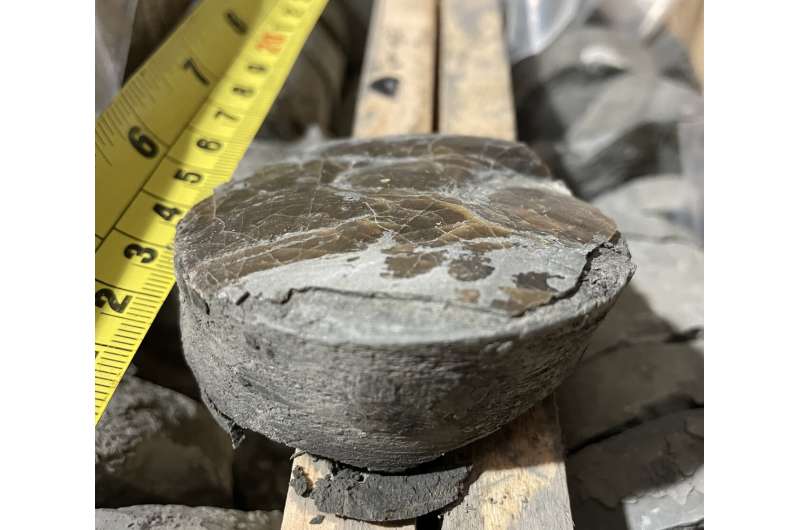This article has been reviewed according to Science X's editorial process and policies. Editors have highlighted the following attributes while ensuring the content's credibility:
fact-checked
peer-reviewed publication
trusted source
proofread
Deoxygenation levels similar to today's played major role in marine extinctions 200 million years ago

Scientists have made a surprising discovery that sheds new light on the role that oceanic deoxygenation (anoxia) played in one of the most devastating extinction events in Earth's history. Their finding has implications for current-day ecosystems—and serves as a warning that marine environments are likely more fragile than apparent.
New research, published today in the journal Nature Geosciences, suggests that oceanic anoxia played an important role in ecosystem disruption and extinctions in marine environments during the Triassic–Jurassic mass extinction, a major extinction event that occurred around 200 million years ago.
Surprisingly, however, the study shows that the global extent of euxinia (an extreme form of de-oxygenated conditions) was similar to the present day.
Earth's history has been marked by a handful of major mass extinctions, during which global ecosystems collapsed and species went extinct. All past extinction events appear to have coincided with global climatic and environmental perturbance that commonly led to ocean deoxygenation. Because of this, oceanic anoxia has been proposed as a likely cause of marine extinctions at those times, with the assumption that the more widespread occurrence of deoxygenation would have led to a larger extinction event.
Using chemical data from ancient mudstone deposits obtained from drill cores in Northern Ireland and Germany, an international research team led by scientists from Royal Holloway (U.K.), and including scientists from Trinity College Dublin's School of Natural Sciences (Ireland) as well as from Utrecht University (Netherlands), was able to link two key aspects associated with the Triassic–Jurassic mass extinction.
The team discovered that pulses in deoxygenation in shallow marine environments along the margins of the European continent at that time directly coincided with increased extinction levels in those places.
On further investigation—and more importantly—the team also found that the global extent of extreme deoxygenation was rather limited, and similar to the present day.
Micha Ruhl, Assistant Professor in Trinity's School of Natural Sciences, and research team member, said, "Scientists have long suspected that ocean deoxygenation plays an important role in the disturbance of marine ecosystems, which can lead to the extinction of species in marine environments. The study of past time intervals of extreme environmental change indeed shows this to be the case, which teaches us important lessons about potential tipping points in local, as well as global ecosystems in response to climatic forcing.
"Crucially however, the current findings show that even when the global extent of deoxygenation is similar to the present day, the local development of anoxic conditions and subsequent locally increased extinction rates can cascade in widespread or global ecosystem collapse and extinctions, even in areas where deoxygenation did not occur.
"It shows that global marine ecosystems become vulnerable, even when only local environments along the edges of the continents are disturbed. Understanding such processes is of paramount importance for assessing present-day ecosystem stability, and associated food supply, especially in a world where marine deoxygenation is projected to significantly increase in response to global warming and increased nutrient run-off from continents."
The study of past global change events, such as the transition between the Triassic and Jurassic periods, allows scientists to disentangle the consequences of global climatic and environmental change and constrain fundamental Earth system processes that control tipping points in Earth's ecosystems.
More information: Andrew D. Bond et al, Globally limited but severe shallow-shelf euxinia during the end-Triassic extinction, Nature Geoscience (2023). DOI: 10.1038/s41561-023-01303-2. www.nature.com/articles/s41561-023-01303-2
Journal information: Nature Geoscience
Provided by Trinity College Dublin




















